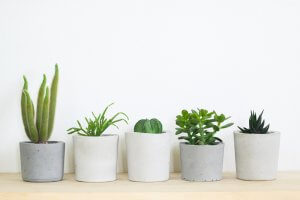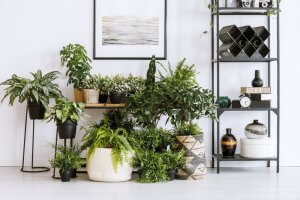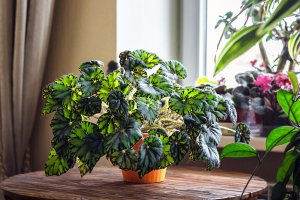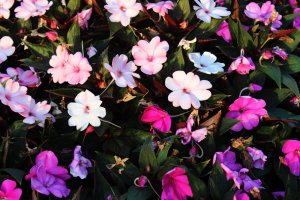3 Indoor Plant Species That Are Perfect for Your Home

Interior design isn’t just about furniture and decorations. One really interesting way to give your home a fresher, healthier and greener feel is to buy yourself some houseplants. In this article, we’ll be taking a look at 3 indoor plant species that are perfect for your home.
Having houseplants helps to oxygenate your home, making it smell great, and feel more natural. However, it’s important to be aware that plants need regular care and attention if you want to keep them happy and healthy.
The biggest problem people encounter on a daily basis is a lack of time. Many of us are out of the house most of the day, and we often forget to look after our plants. So, if you decide to buy these living decorations, you need to make a real effort to take care of them.
The difference between indoor and outdoor plants

Indoor plants and outdoor plants need different climates and different levels of care. Some plants can withstand adverse weather conditions, while others require the warmth and shelter of our homes.
However, both these groups have one thing in common – they need constant care, and can’t go long without attention. After all, these are living beings, and they can quickly deteriorate if neglected for long periods of time.
So, what should you take from all this? In short, if you want to keep your houseplants looking lush, green and healthy, you need to dedicate time to them at least once a week.
Having happy healthy plants in the house can have many benefits for your health.
1. Indoor plant species: aspidistra

The aspidistra’s scientific name is Aspidistra Elatior. Characterized by its broad, glossy leaves, these plants can grow to a considerable size. When well-watered, their leaves take on a beautiful intense green tone.
- Aspidistra require acidic soil.
- They need constant moisture and good drainage. In summer, it’s important to keep a particularly close eye on them to ensure they don’t dry out.
- You’ll also need to treat them with liquid fertilizer, which can be applied once a month.
- They don’t usually require pruning unless the leaves dry out. If this happens, you’ll need to remove them.
- If you want to grow more aspidistra, take the plant out of the pot, and cut the rhizome in two or more pieces to create a new plant.
- Aspidistra should never be left in direct sunlight – it’s best to place them in semi-shaded areas. For example, the ideal place might be the corner of the living room, far away from the window.
2. Rex begonia

Belonging to the Begoniaceae family, the rex begonia offers a really interesting range of colors when it comes to interior decorating. While its leaves are dark, somber green in color, this contrasts with curious shades of white and pink.
- Of all the begonias, the rex is the largest.
- It needs acidic soil and rich topsoil. While the soil should always be damp, you should never spray the leaves with water.
- Avoid direct sunlight and low temperatures.
- Just like the aspidistra, you can grow more rex begonia by cutting the rhizome in two. Simply place it in a separate plant pot, and you’ll have a whole new plant.
Begonias will give your home a really original touch of color.
3. Indoor plant species: balsam

Though it’s commonly known as balsam or sultana, its scientific name is Impatiens Walleriana. The brightness and intensity of the flowers mean that this plant will bring a splash of joy and color to any home.
- These plants require damp soil in order to survive and need plenty of water in the summer. Though they need slightly less in the winter, you should never leave them without water for long periods of time. They can easily dry out and lose their leaves.
- It’s important to place these plants in semi-shaded areas. They don’t do well in direct sunlight.
- You can grow more balsam plants by taking a cutting and placing it in water until it sprouts roots.
- Ideally, these plants should be placed high up, close to a window.
Interior design isn’t just about furniture and decorations. One really interesting way to give your home a fresher, healthier and greener feel is to buy yourself some houseplants. In this article, we’ll be taking a look at 3 indoor plant species that are perfect for your home.
Having houseplants helps to oxygenate your home, making it smell great, and feel more natural. However, it’s important to be aware that plants need regular care and attention if you want to keep them happy and healthy.
The biggest problem people encounter on a daily basis is a lack of time. Many of us are out of the house most of the day, and we often forget to look after our plants. So, if you decide to buy these living decorations, you need to make a real effort to take care of them.
The difference between indoor and outdoor plants

Indoor plants and outdoor plants need different climates and different levels of care. Some plants can withstand adverse weather conditions, while others require the warmth and shelter of our homes.
However, both these groups have one thing in common – they need constant care, and can’t go long without attention. After all, these are living beings, and they can quickly deteriorate if neglected for long periods of time.
So, what should you take from all this? In short, if you want to keep your houseplants looking lush, green and healthy, you need to dedicate time to them at least once a week.
Having happy healthy plants in the house can have many benefits for your health.
1. Indoor plant species: aspidistra

The aspidistra’s scientific name is Aspidistra Elatior. Characterized by its broad, glossy leaves, these plants can grow to a considerable size. When well-watered, their leaves take on a beautiful intense green tone.
- Aspidistra require acidic soil.
- They need constant moisture and good drainage. In summer, it’s important to keep a particularly close eye on them to ensure they don’t dry out.
- You’ll also need to treat them with liquid fertilizer, which can be applied once a month.
- They don’t usually require pruning unless the leaves dry out. If this happens, you’ll need to remove them.
- If you want to grow more aspidistra, take the plant out of the pot, and cut the rhizome in two or more pieces to create a new plant.
- Aspidistra should never be left in direct sunlight – it’s best to place them in semi-shaded areas. For example, the ideal place might be the corner of the living room, far away from the window.
2. Rex begonia

Belonging to the Begoniaceae family, the rex begonia offers a really interesting range of colors when it comes to interior decorating. While its leaves are dark, somber green in color, this contrasts with curious shades of white and pink.
- Of all the begonias, the rex is the largest.
- It needs acidic soil and rich topsoil. While the soil should always be damp, you should never spray the leaves with water.
- Avoid direct sunlight and low temperatures.
- Just like the aspidistra, you can grow more rex begonia by cutting the rhizome in two. Simply place it in a separate plant pot, and you’ll have a whole new plant.
Begonias will give your home a really original touch of color.
3. Indoor plant species: balsam

Though it’s commonly known as balsam or sultana, its scientific name is Impatiens Walleriana. The brightness and intensity of the flowers mean that this plant will bring a splash of joy and color to any home.
- These plants require damp soil in order to survive and need plenty of water in the summer. Though they need slightly less in the winter, you should never leave them without water for long periods of time. They can easily dry out and lose their leaves.
- It’s important to place these plants in semi-shaded areas. They don’t do well in direct sunlight.
- You can grow more balsam plants by taking a cutting and placing it in water until it sprouts roots.
- Ideally, these plants should be placed high up, close to a window.
All cited sources were thoroughly reviewed by our team to ensure their quality, reliability, currency, and validity. The bibliography of this article was considered reliable and of academic or scientific accuracy.
Güther, Heide: Plantas de interior: rápido y fácil, Hispano Europea, 2003.







